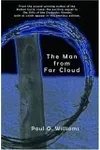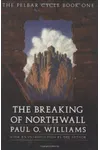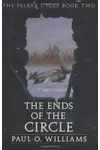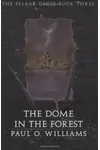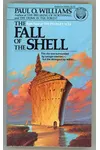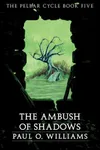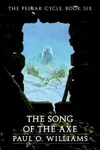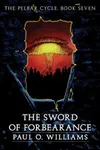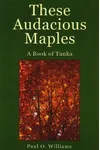Picture an American storyteller who wove post-apocalyptic adventures and delicate haiku with equal finesse—meet Paul O. Williams! This science fiction author and poet captured hearts with his Pelbar Cycle, a series set in a fractured future North America, while his Japanese-inspired poetry added a lyrical touch to his legacy. From coining 'tontoism' to crafting matriarchal societies, Williams’s work is a hidden gem waiting to be explored.
The Making of Paul O. Williams
Born on January 17, 1935, in Chatham, New Jersey, Paul Osborne Williams grew up with a curious mind that later fueled his diverse career. He earned a PhD from the University of Pennsylvania and became a professor of English at Principia College in Elsah, Illinois. His academic life blended with a passion for writing, spanning science fiction and Japanese poetry. Williams’s early exposure to literature and culture shaped his ability to craft vivid worlds and concise, evocative poems.
His career took flight in the 1960s when he began writing haiku, eventually becoming president of the Haiku Society of America. This poetic foundation influenced his science fiction, infusing it with a reflective tone. By the 1980s, Williams was ready to make his mark with the Pelbar Cycle, earning the John W. Campbell Award for Best New Writer in 1983.
Paul O. Williams’s Unforgettable Stories
Williams’s most celebrated work is the Pelbar Cycle, a seven-book science fiction series set 1,000 years after a nuclear holocaust dubbed the 'time of fire.' The series, starting with The Breaking of Northwall (1981), follows the matriarchal Pelbar society along the Upper Mississippi River. Characters like Jestak, a visionary exile, and Stel, a rebellious craftsman, drive the narrative of cultural reconnection amid warring tribes. The series, including titles like The Ends of the Circle and The Dome in the Forest, is praised for its optimistic take on post-apocalyptic life, focusing on unity over violence.
Beyond science fiction, Williams excelled in Japanese poetry forms like haiku, senryū, and tanka. His collection Outside Robins Sing: Selected Haiku showcases his knack for capturing fleeting moments with precision. In 1975, he coined 'tontoism' in an essay, critiquing haiku that omit articles to mimic the stunted English of the Lone Ranger’s sidekick, Tonto—a term that sparked debate in poetic circles. His book The Nick of Time: Essays on Haiku Aesthetics further cemented his influence in poetry.
Williams’s style blends rich world-building with introspective depth. His science fiction explores human resilience and cultural evolution, while his poetry distills complex emotions into sparse, vivid lines. This duality makes his work both thrilling and contemplative, appealing to fans of speculative fiction and poetry alike.
Why Paul O. Williams Matters
Paul O. Williams left a unique mark on science fiction and poetry. The Pelbar Cycle, republished by the University of Nebraska Press in 2005–2006, remains a standout for its hopeful vision of humanity’s future, contrasting with the genre’s often grim narratives. His focus on matriarchal societies and cultural reconciliation feels prescient, resonating with modern readers. In poetry, his leadership in the Haiku Society and innovative ideas like tontoism inspired countless poets to rethink form and language.
Though he passed away on June 2, 2009, from an aortic dissection, Williams’s legacy endures through his works and the communities he influenced. His ability to bridge genres—science fiction’s vast scope and haiku’s quiet intimacy—makes him a rare literary figure whose stories and poems still captivate.
- Born: January 17, 1935, Chatham, New Jersey
- Died: June 2, 2009, Elsah, Illinois
- Key Works: Pelbar Cycle, Outside Robins Sing: Selected Haiku, The Nick of Time: Essays on Haiku Aesthetics
- Awards: John W. Campbell Award (1983), Museum of Haiku Literature Award
Snag The Breaking of Northwall or a copy of Outside Robins Sing and dive into Paul O. Williams’s captivating blend of science fiction and poetry!

